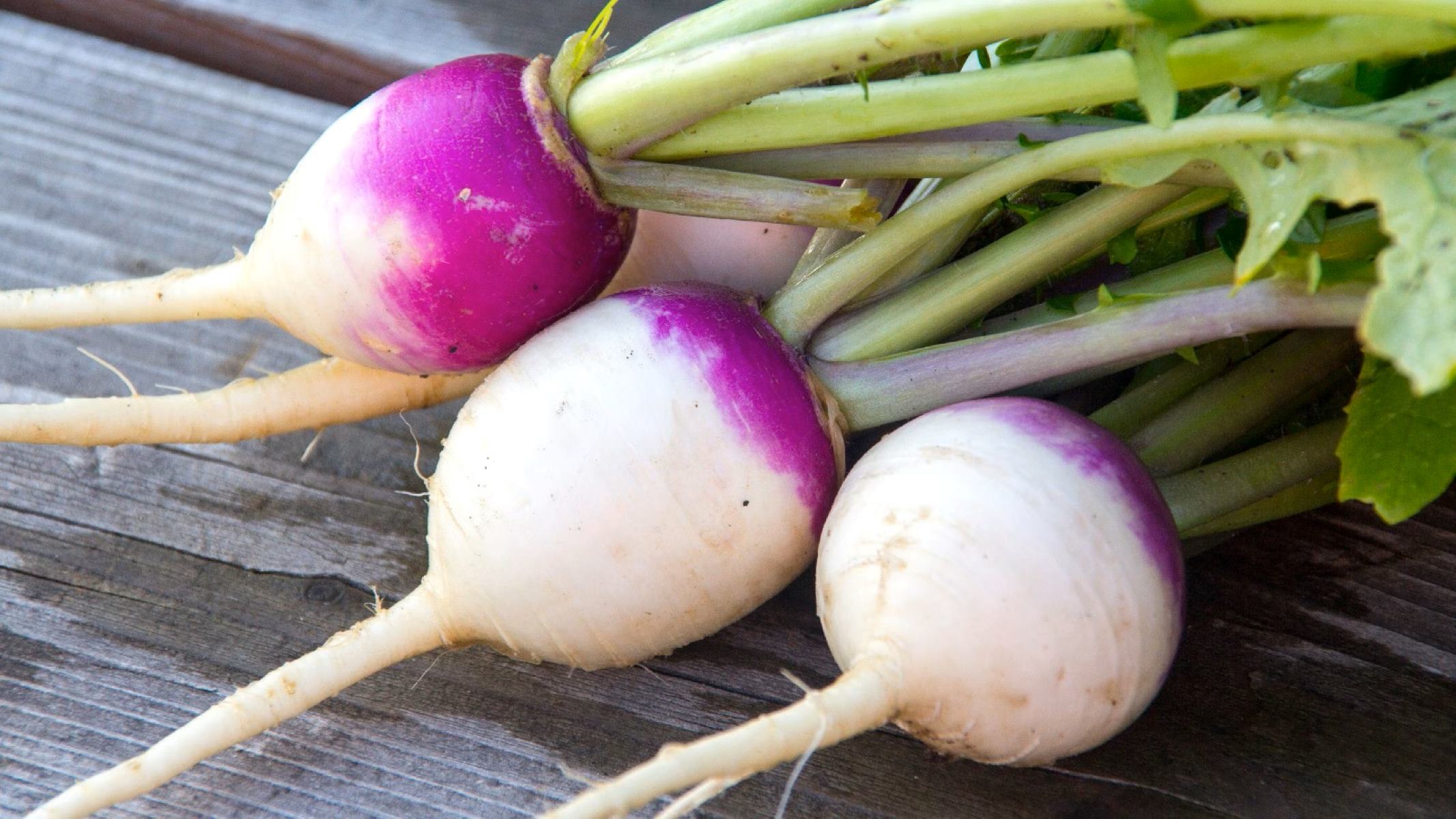

Articles
How To Store Turnips
Modified: January 5, 2024
Looking for articles on how to store turnips? Check out our comprehensive guide for tips and tricks to keep your turnips fresh and flavorful for longer.
(Many of the links in this article redirect to a specific reviewed product. Your purchase of these products through affiliate links helps to generate commission for Storables.com, at no extra cost. Learn more)
Introduction
Turnips are a versatile and nutritious root vegetable that can be enjoyed in a variety of dishes. Whether you have harvested an abundance of turnips from your garden or bought a large amount from the local farmers market, it’s important to know how to store them properly to ensure their freshness and flavor.
In this article, we will guide you through the step-by-step process of storing turnips so that you can enjoy their delicious taste for an extended period of time. We will cover everything from harvesting and cleaning the turnips to choosing the right storage method and checking on them regularly. By following these simple yet effective techniques, you can keep your turnips fresh and flavorful for weeks or even months.
So, let’s dive in and learn how to store turnips to maximize their shelf life and maintain their quality!
Key Takeaways:
- Harvest turnips at the right time, handle with care, and clean thoroughly to ensure optimal storage potential and preserve their freshness for extended periods.
- Choose the best storage method, whether it’s a root cellar, refrigerator, or freezer, to maintain turnips’ quality and enjoy their delicious flavor year-round.
Read more: How To Store Turnips In The Fridge
Step 1: Harvesting Turnips
The first step in storing turnips is to harvest them at the right time. Turnips are typically ready for harvest when their roots are about 2 to 3 inches in diameter. They should have a firm and smooth texture, with a vibrant color.
To harvest turnips, use a garden fork or a shovel to gently loosen the soil around the base of the plants. Carefully lift the turnips out of the ground, taking care not to bruise or damage them. Remove any excess soil by gently brushing it off or rinsing the turnips with water.
It’s important to note that turnips can be damaged by frost, so it’s best to harvest them before the first frost hits. If you anticipate frost in your area, consider using row covers or blankets to protect your turnip plants.
Once you have harvested the turnips, remove the leaves by cutting them off about an inch above the top of the root. Leave a small portion of the stem attached to the turnip, as this will help to preserve their freshness during storage.
By harvesting the turnips at the right time and handling them with care, you are ensuring that they will have the best storage potential.
Step 2: Cleaning Turnips
After harvesting the turnips, it’s important to clean them properly before storing. Cleaning the turnips will remove any dirt, debris, or bacteria that may be present on their surface.
Start by gently rinsing the turnips under cool running water. Use a vegetable brush or your fingers to scrub away any stubborn dirt or soil. Pay special attention to the crevices and cracks on the surface of the turnips to ensure they are thoroughly cleaned. Avoid using harsh scrubbing brushes as they can damage the outer skin of the turnips.
Once you have cleaned the turnips, pat them dry with a clean towel or paper towels. Make sure to remove any excess moisture as it can promote spoilage during storage.
It’s important to note that if you’re planning to store turnips for a longer period of time, you can consider blanching them before storing. Blanching involves briefly immersing the turnips in boiling water and then transferring them to an ice bath to halt the cooking process. Blanching helps to preserve the color, texture, and flavor of the turnips, and also extends their storage life.
By cleaning the turnips thoroughly and optionally blanching them, you are ensuring that they are free from any dirt or bacteria that could cause them to spoil prematurely during storage.
Step 3: Preparing Turnips for Storage
Before storing turnips, it’s essential to properly prepare them to ensure they stay fresh and flavorful for as long as possible. Follow these steps to ensure optimal preparation:
- Trim the greens: Remove the leafy greens from the turnips, leaving about an inch of stem attached. Excess greens can draw moisture from the roots and contribute to spoilage, so it’s best to separate them.
- Inspect for damage or rot: Carefully examine each turnip for any signs of damage, rot, or soft spots. Discard any turnips that are bruised, discolored, or have visible signs of decay. Damaged turnips can spoil quickly and affect the quality of other stored turnips.
- Sort by size: Separate the turnips into piles based on their size. Grouping them together allows for easier management when it’s time to use them. This way, you can readily access turnips of the desired size without disturbing the others.
- For mature turnips: If you have mature turnips with a thicker outer skin, consider lightly scrubbing the skin with a brush or a damp cloth to remove any remaining dirt or debris. This step helps to maintain cleanliness and keeps the outer layer in good condition.
- Keep small turnips intact: If you have smaller turnips, it’s generally best to leave them with their tender skin intact. Removing the skin from small turnips can expose them to faster moisture loss and spoilage.
By properly preparing the turnips before storing, you are setting the stage for optimal storage conditions and preserving their quality for a longer period of time.
Step 4: Choosing the Right Storage Method
Choosing the appropriate storage method is crucial for preserving the freshness and flavor of turnips. Consider the following options to find the best storage method for your needs:
- Root cellar: A root cellar provides an ideal environment for storing turnips. It offers cool, dark, and humid conditions that mimic the natural underground environment. If you have access to a root cellar, store the turnips in wooden crates or mesh bags, ensuring good ventilation to prevent rotting.
- Refrigerator: If you don’t have a root cellar or need short-term storage, the refrigerator can be a convenient option. Place the turnips in a perforated plastic bag or a breathable produce storage bag. It’s important to keep them in the crisper drawer, set at a temperature between 32-40°F (0-4°C).
- Freezer: If you prefer to store turnips for an extended period while preserving their texture and flavor, freezing is a great option. Blanch the turnips first, then cut them into desired sizes and blanch once more. Pack them tightly in airtight freezer bags or containers, removing any excess air to prevent freezer burn.
Consider the quantity of turnips you have, the desired storage duration, and the available storage options when deciding on the best method for you. Each method offers distinct advantages, so choose the one that fits your needs and available resources.
Remember that regardless of the storage method chosen, it’s essential to maintain proper temperature, humidity, and ventilation levels to ensure the turnips remain fresh and retain their quality for as long as possible.
Store turnips in a cool, dark place with good air circulation, such as a root cellar or the crisper drawer of the refrigerator. Remove the greens before storing to prevent moisture loss.
Read more: How To Store Turnip Greens
Step 5: Storing Turnips in a Root Cellar
If you have access to a root cellar, it can provide an excellent environment for storing turnips. Follow these steps to store turnips in a root cellar:
- Prepare the storage area: Ensure that your root cellar is clean, cool, dark, and humid. Remove any spoiled produce or debris that could cause contamination. Adjust the humidity level if necessary by using damp sand, trays of water, or a humidifier.
- Choose the right container: Select wooden crates, mesh bags, or breathable containers for storing turnips in the root cellar. These containers provide proper ventilation, allowing air circulation around the turnips.
- Arrange the turnips: Place the turnips in a single layer inside the containers, making sure they are not touching each other. This minimizes the risk of rotting and allows for better air circulation.
- Check regularly: Regularly inspect the stored turnips for any signs of spoilage, such as mold or soft spots. Remove any affected turnips promptly to prevent the spread of decay.
- Monitor the temperature and humidity: Maintain a consistent temperature between 32-40°F (0-4°C) and a humidity level of around 90-95%. Use a thermometer and a humidity monitor to ensure the conditions remain suitable for turnip storage.
Storing turnips in a root cellar can extend their shelf life for several months, allowing you to enjoy their freshness throughout the winter months. However, it’s important to regularly check on the stored turnips to ensure that they remain in good condition.
Note that root cellars may not be available to everyone, so you can also consider other storage methods based on your situation and available resources.
Step 6: Storing Turnips in the Refrigerator
If you don’t have access to a root cellar or need short-term storage for your turnips, the refrigerator can be a suitable option. Follow these steps to store turnips in the refrigerator:
- Prepare the turnips: Ensure that the turnips are clean and dry before storage. Trim the greens, leaving about an inch of stem attached to the root. This helps to preserve their freshness.
- Choose suitable storage bags: Place the turnips in a perforated plastic bag or breathable produce storage bag. These bags allow for proper air circulation and prevent excess moisture build-up.
- Store in the crisper drawer: Place the bagged turnips in the crisper drawer of your refrigerator. The crisper drawer helps maintain a stable temperature and humidity level, which is ideal for storing vegetables.
- Set the temperature: Adjust your refrigerator’s temperature to a range between 32-40°F (0-4°C). This temperature range provides the optimal conditions for keeping turnips fresh and crisp.
- Check regularly: Regularly inspect the stored turnips for any signs of spoilage. Remove any decaying turnips to prevent the spread of mold or rot to other stored produce.
Storing turnips in the refrigerator can keep them fresh for a few weeks. However, it’s important to consume them within a reasonable time frame to ensure their quality and flavor.
Remember that proper ventilation and temperature control are essential for maintaining the freshness of turnips in the refrigerator. Avoid storing turnips next to fruits or vegetables that produce ethylene gas, as it can accelerate the ripening process and spoilage of turnips.
Step 7: Storing Turnips in the Freezer
If you want to store turnips for an extended period while preserving their texture and flavor, freezing is a great option. Follow these steps to store turnips in the freezer:
- Blanch the turnips: Start by blanching the turnips to help maintain their quality during freezing. Bring a pot of water to a boil and add the turnips. Blanch them for 3-4 minutes, then remove and immediately plunge them into an ice bath to stop the cooking process.
- Prepare the turnips: Once the blanched turnips are cooled, peel and cut them into desired sizes or shapes. You can choose to slice, dice, or leave them in larger chunks based on your preference.
- Pack for freezing: Place the prepared turnips in freezer-safe bags or airtight containers. Squeeze out any excess air from the bags before sealing to prevent freezer burn. Label the bags or containers with the date for easy reference.
- Freeze the turnips: Put the packed turnips in the freezer and store them at a constant temperature of 0°F (-18°C) or below. This ensures the preservation of their texture and flavor.
Frozen turnips can generally last for 8-12 months in the freezer. When you’re ready to use them, thaw the turnips in the refrigerator overnight or cook them directly from frozen, depending on the recipe’s requirements.
Freezing provides an excellent option for preserving the harvest and enjoying turnips throughout the year. It’s an ideal method for turnips that you don’t plan on consuming within a few weeks. Proper packaging and storage are key to maintaining the quality of frozen turnips.
Step 8: Checking Stored Turnips Regularly
Regardless of the storage method you choose, it’s important to check on your stored turnips regularly. Regular monitoring helps ensure that any spoiled or damaged turnips are promptly removed, preventing them from affecting the others.
Here are some guidelines for checking stored turnips:
- Inspect for signs of spoilage: Regularly examine the stored turnips for any signs of mold, soft spots, or rotting. Pay attention to the skin’s texture, color, and firmness.
- Remove damaged turnips: If you come across any turnips that are spoiled, soft, or showing signs of decay, remove them immediately from the storage area. Disposing of damaged turnips helps prevent the spread of rot to the remaining ones.
- Adjust storage conditions if needed: If you notice any issues with temperature, humidity levels, or ventilation, make the necessary adjustments to maintain optimal storage conditions. This could include adding moisture or adjusting temperature settings.
- Rotate the turnips: If you have multiple turnips in storage, it’s a good practice to rotate them regularly. Use the older turnips first to ensure freshness and prevent any from being forgotten and left to spoil.
By regularly checking on your stored turnips, you can catch any signs of spoilage early and take appropriate action. This helps to ensure that the remaining turnips stay fresh and maintain their quality for as long as possible.
Remember, the storage duration may vary depending on the storage method and condition of the turnips. It’s always a good idea to consume the stored turnips within a reasonable time frame to enjoy their best taste and texture.
Read more: How To Store Turnips Long Term
Conclusion
Properly storing turnips is essential to maintain their freshness, flavor, and nutritional value for an extended period. By following the step-by-step guide outlined in this article, you can ensure that your harvested or purchased turnips stay in prime condition for weeks or even months.
From harvesting the turnips at the right time to cleaning them thoroughly, preparing them for storage, and choosing the appropriate storage method, each step plays a crucial role in preserving the turnips’ quality. Whether you have access to a root cellar, a refrigerator, or a freezer, there is a storage method that suits your needs.
Monitoring the stored turnips regularly and removing any damaged or spoiled ones is vital to prevent the spread of rot and maintain the overall quality of the remaining turnips. Keeping track of temperature, humidity, and ventilation ensures optimal storage conditions.
Remember, each storage method has its limitations. Root cellars offer ideal conditions for long-term storage, while refrigerators and freezers provide shorter-term solutions. Regardless of the method, it’s important to consume the stored turnips within a reasonable time frame to enjoy their best taste and texture.
Storing turnips properly not only allows you to enjoy their delicious flavor in various recipes throughout the year but also ensures that your efforts in growing or purchasing them don’t go to waste. So, take the necessary steps to store your turnips correctly and savor their goodness for an extended time.
With proper storage techniques, you can enjoy the versatile uses of turnips in soups, stews, roasted dishes, and more, ensuring a fresh, nutritious, and flavorful addition to your meals even when they are out of season.
Frequently Asked Questions about How To Store Turnips
Was this page helpful?
At Storables.com, we guarantee accurate and reliable information. Our content, validated by Expert Board Contributors, is crafted following stringent Editorial Policies. We're committed to providing you with well-researched, expert-backed insights for all your informational needs.
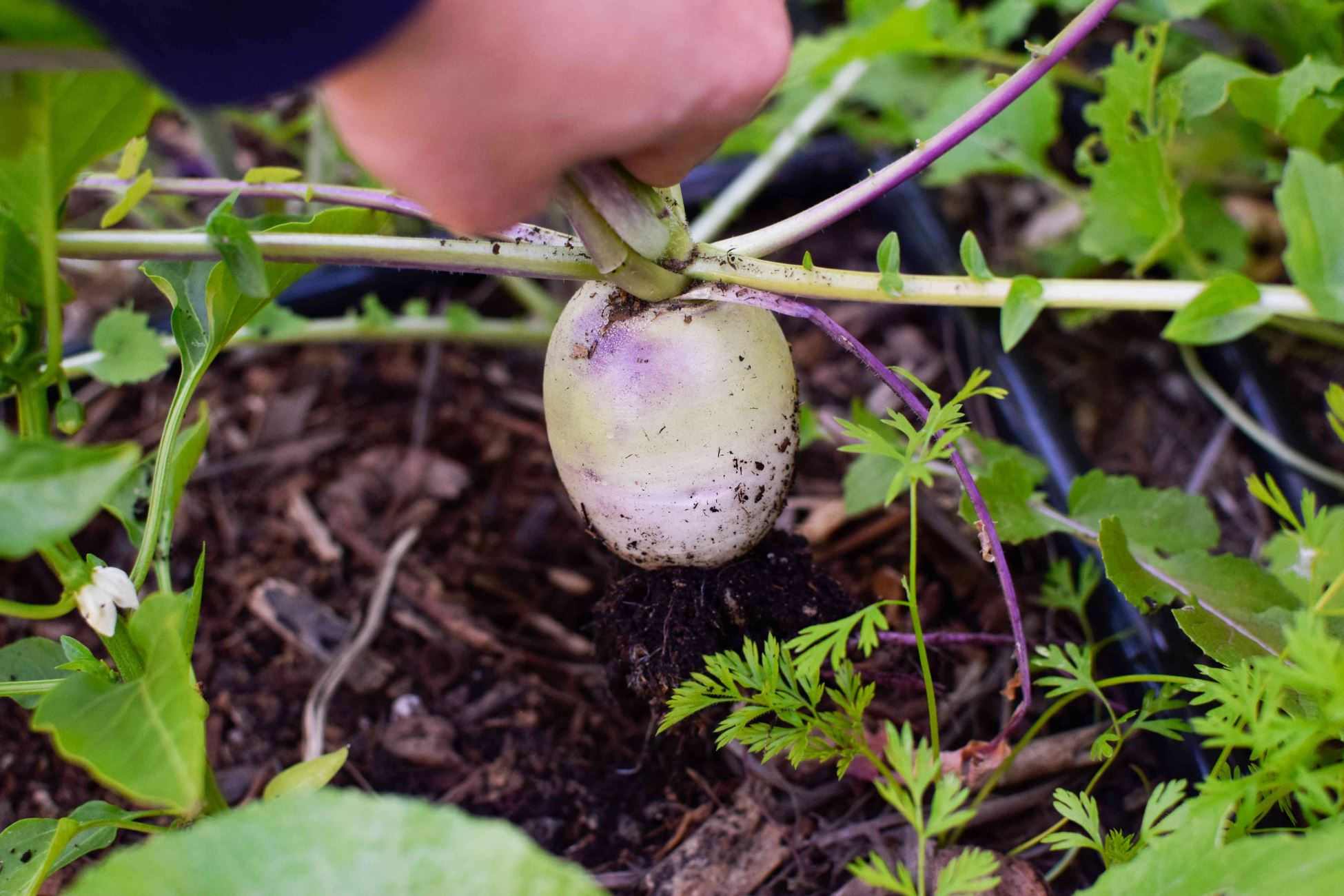
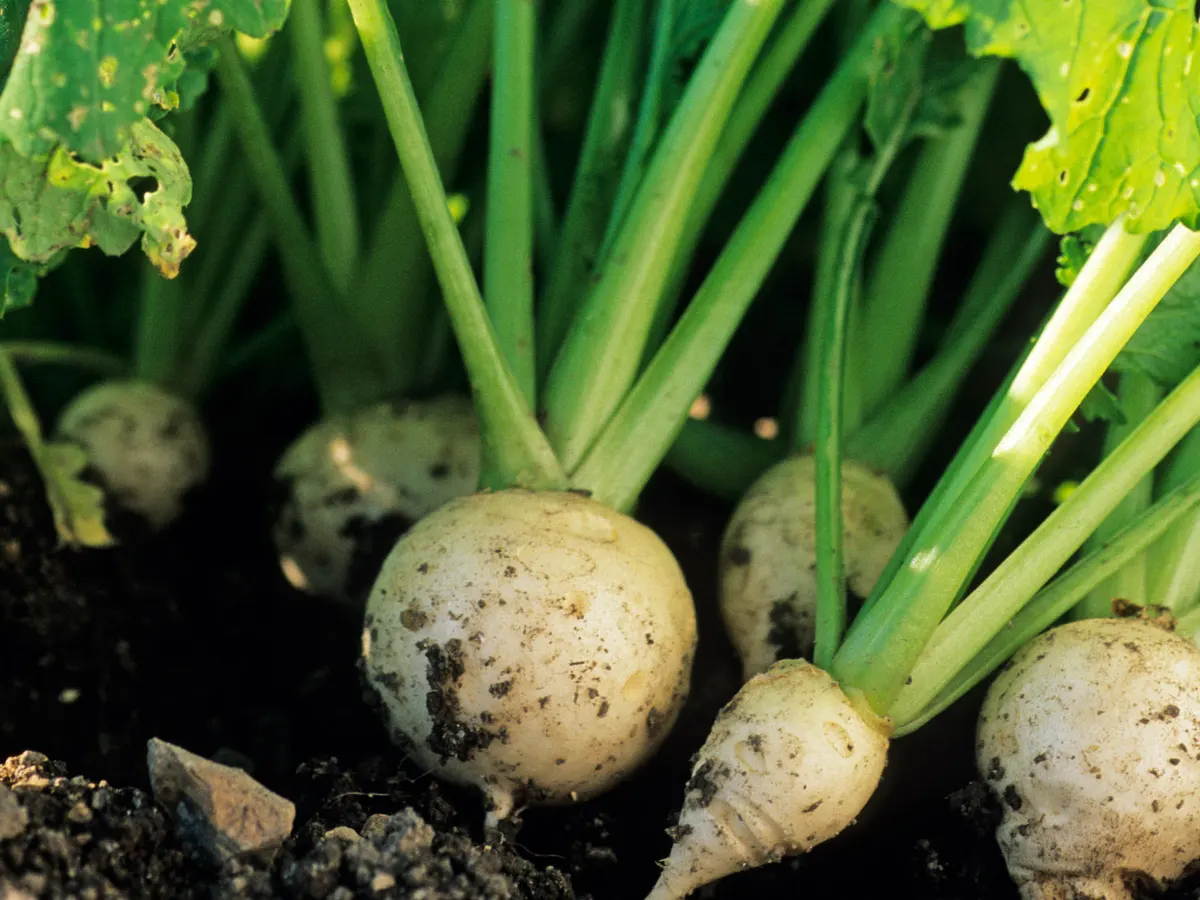

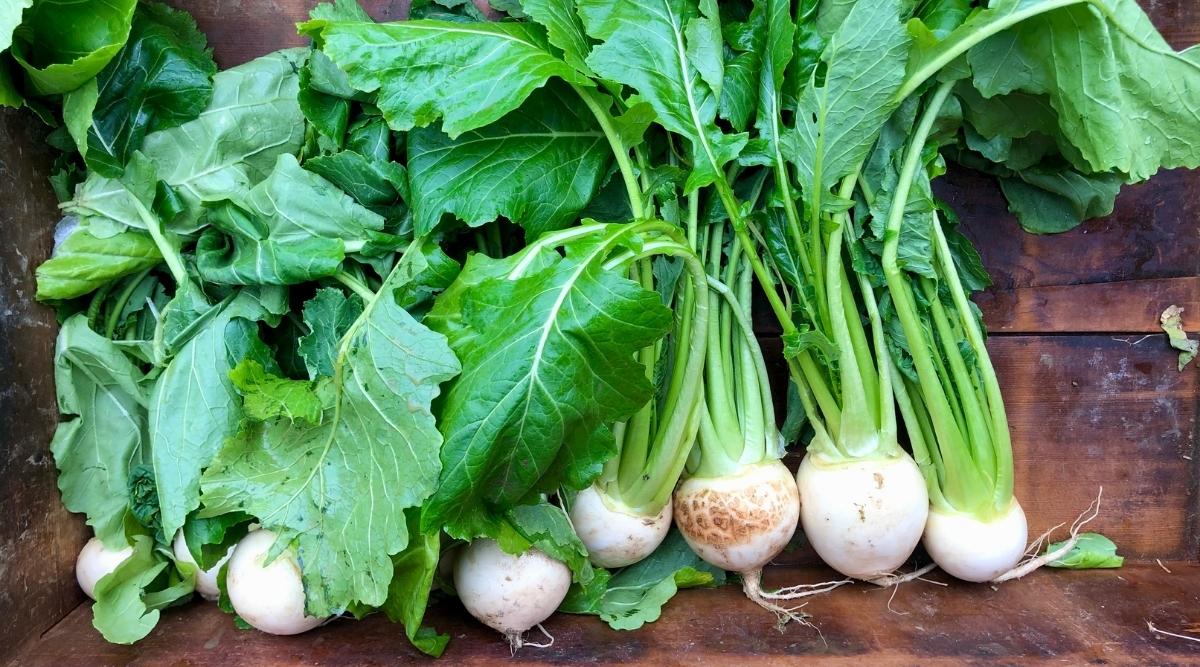
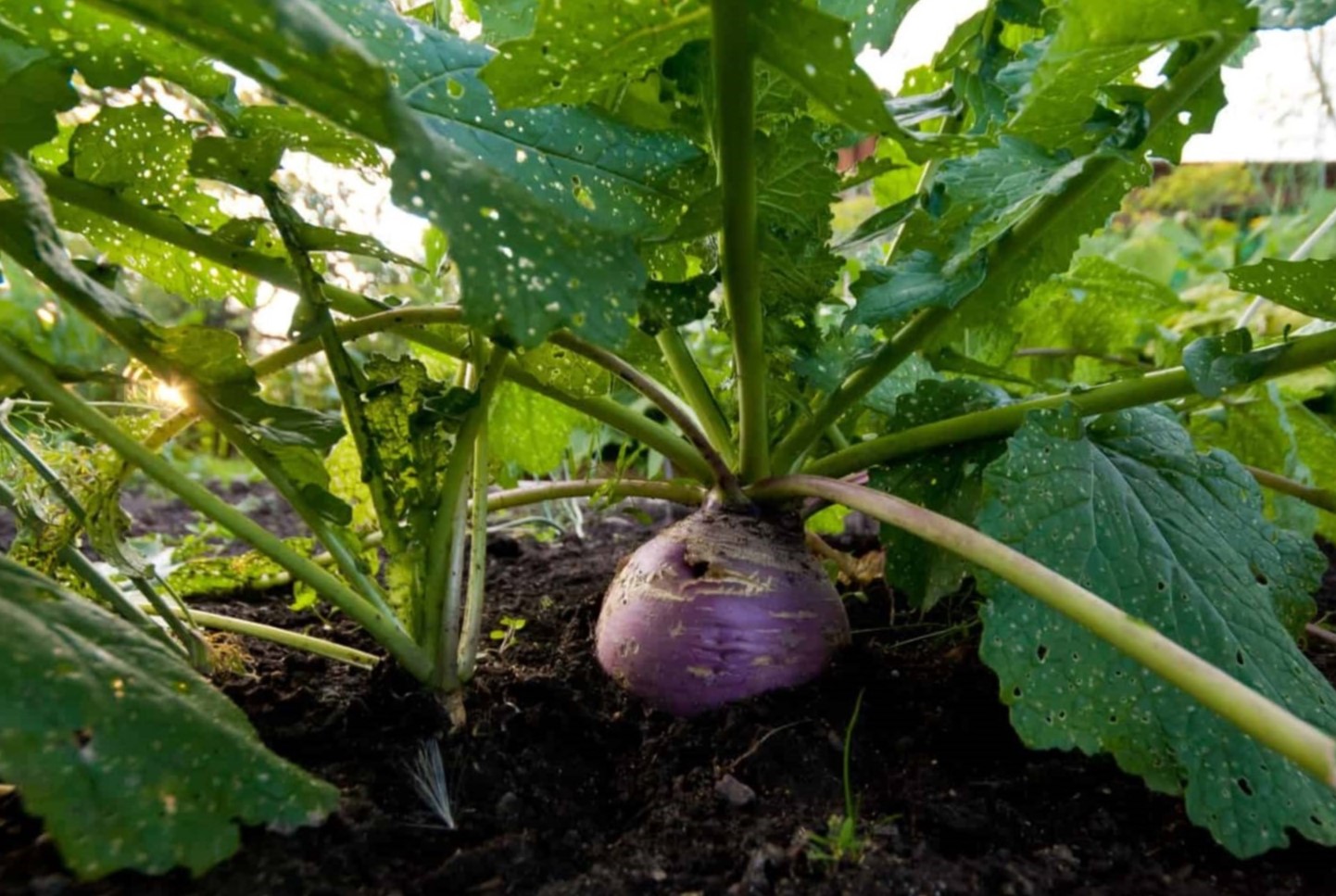
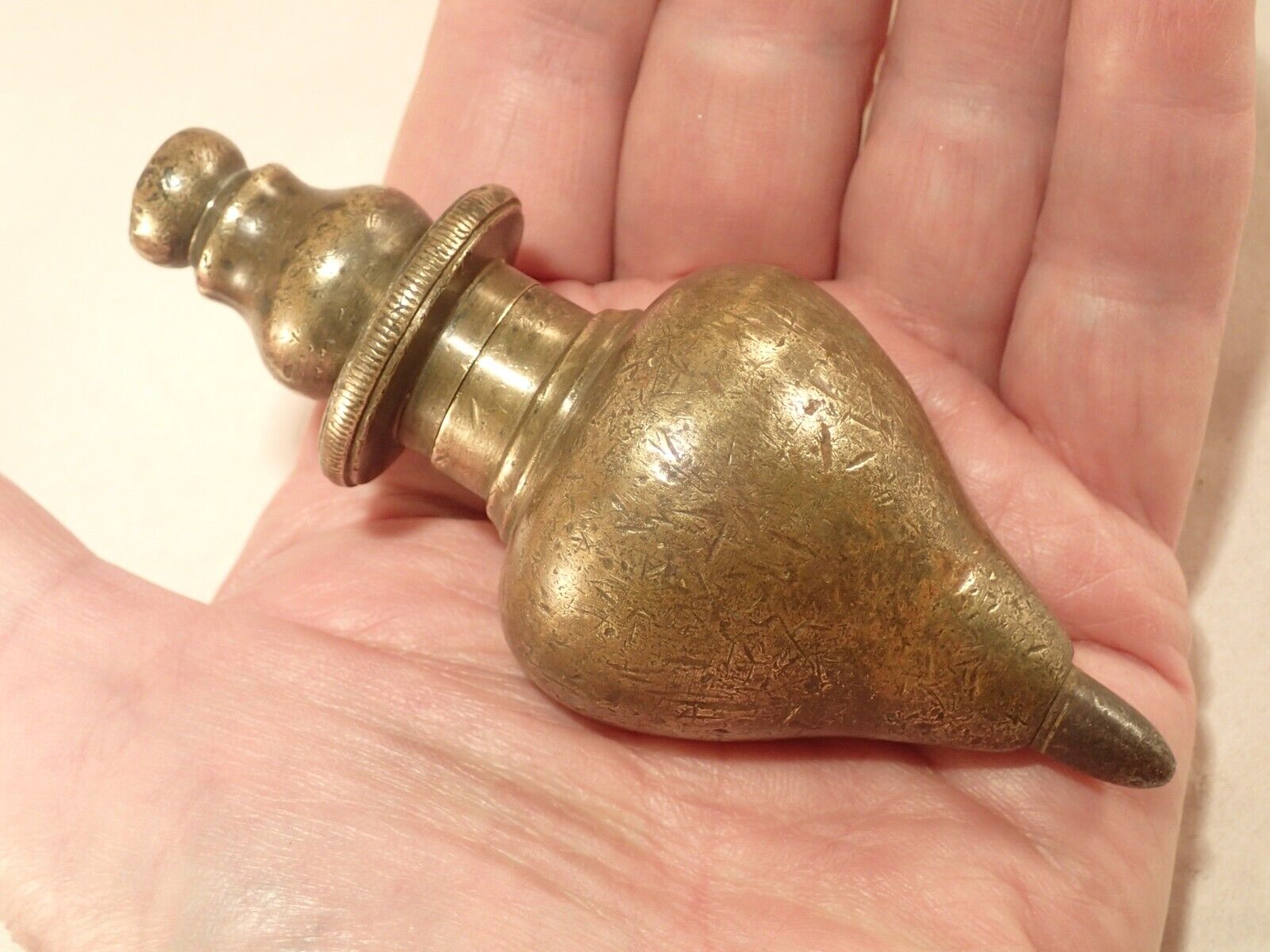



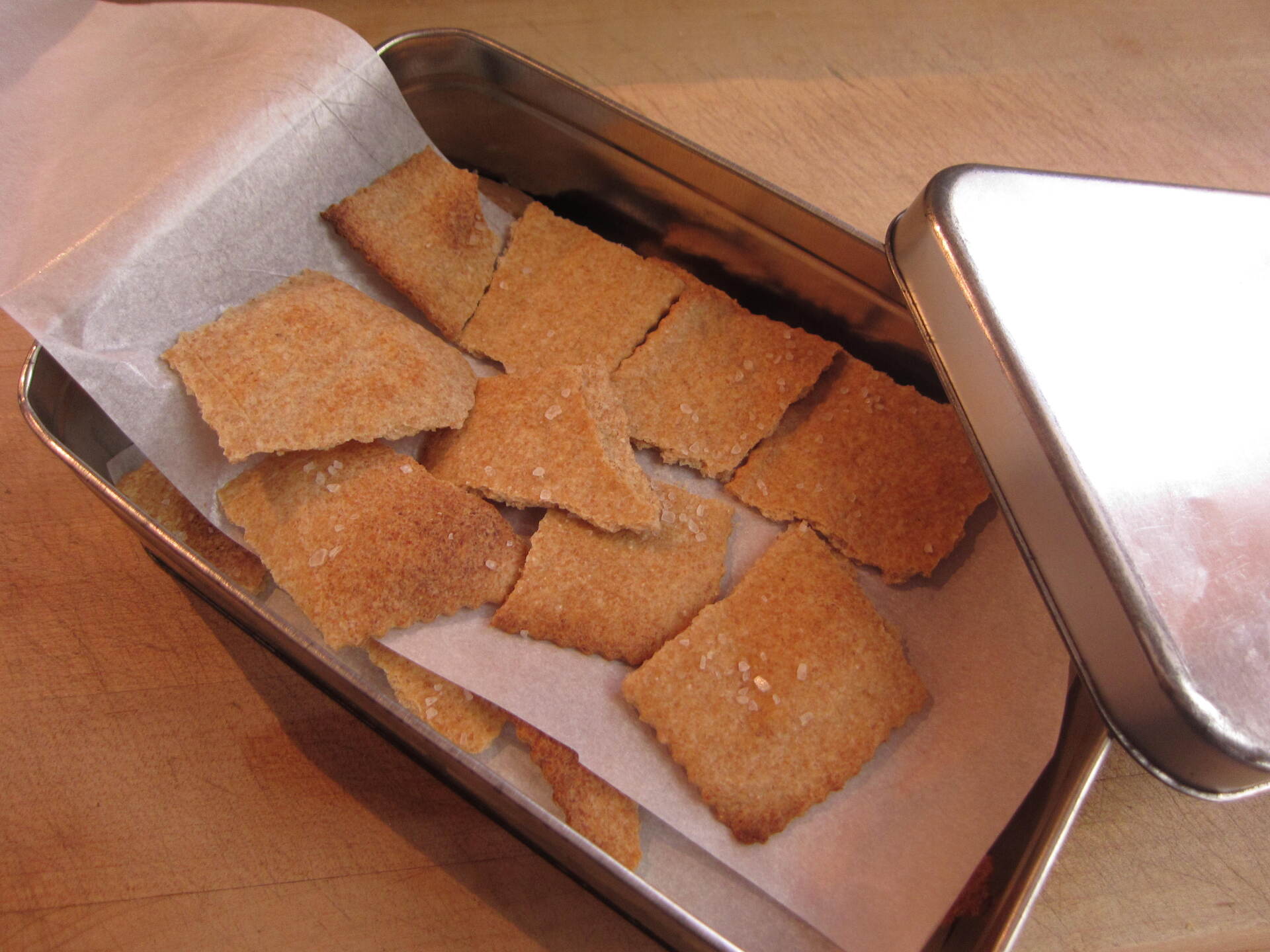
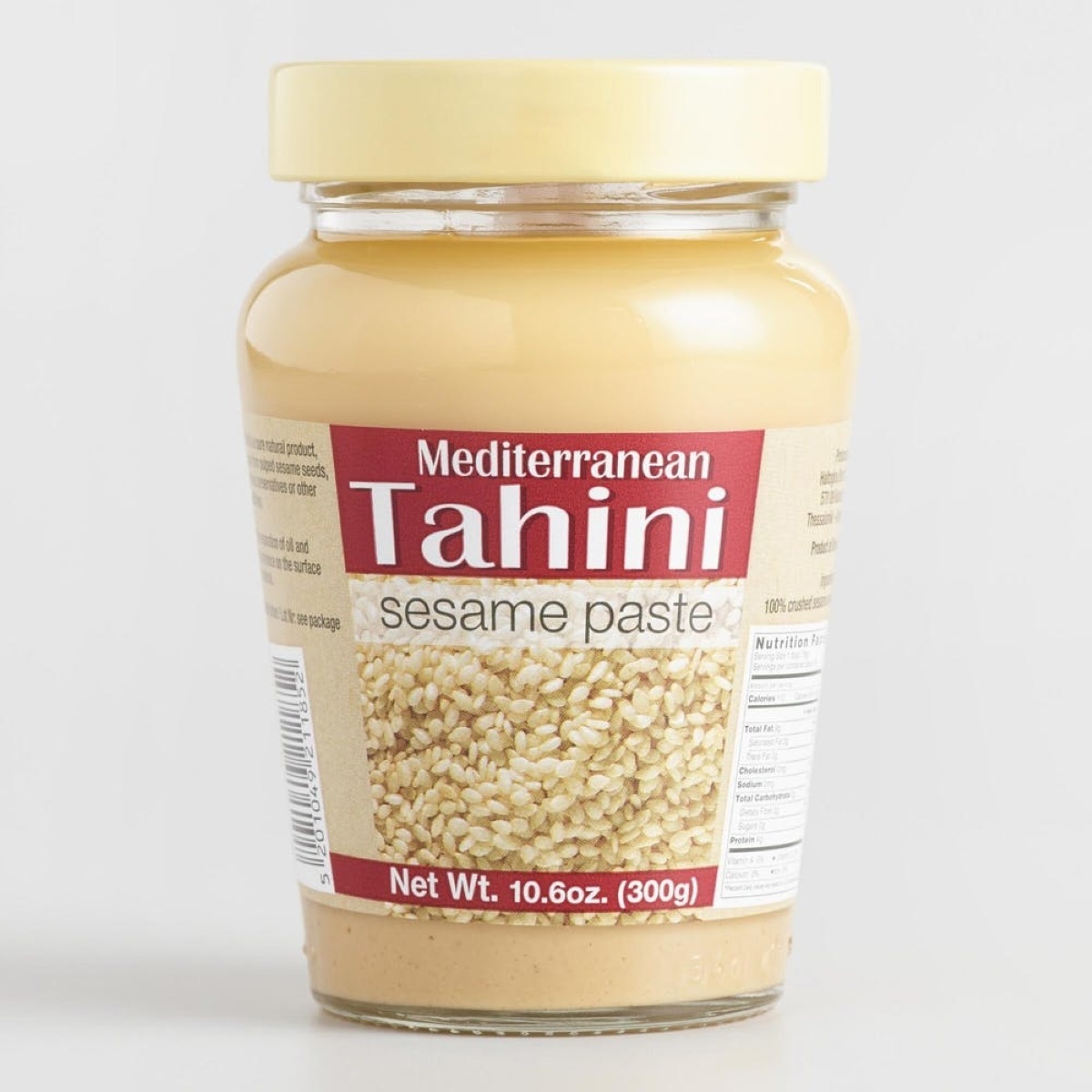



0 thoughts on “How To Store Turnips”